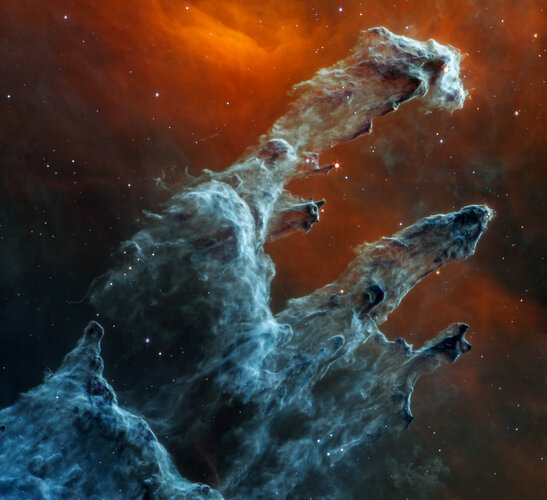
Alongside the other instruments, MIRI is now sending back the kind of data that the scientists had been dreaming about.
“Yeah, those first few months in particular were quite surreal,” says Sarah Kendrew, MIRI Instrument and Calibration Scientist, ESA. “We'd been doing so much preparatory work with simulated data, so in a sense we knew what the data would look like. So you could be looking at it thinking it all looks very familiar, but then at the same time, it's just like, but it came from space!”
MIRI’s data featured heavily in the very first images released from Webb, including the ‘mountains’ and ‘valleys’ of the Carina nebula, the interacting galaxy group Stephan Quintet, and the Southern Ring Nebula. Subsequent images have continued to raise the bar both in terms of beauty and science.
However, because MIRI is such a large step up from any previous mid-infrared instrument, the bar is also raised in terms of being able to interpret the images. “MIRI is giving us a lot of very new things that are harder to interpret, just because MIRI is such a big difference from what there was before,” says Sarah.
But this is the essence of cutting-edge science and astronomers are already racing to develop more detailed computer models that can tell them more about the various physical processes that give raise to mid-infrared readings.
“There's a huge potential for new understanding with MIRI, particularly in star formation and the properties of dust and galaxies. It may take a bit longer to interpret but I think the new science that will come out of MIRI is going to be really, really substantial,” says Sarah.
MIRI, together with the other instruments on Webb, has the potential to advance every branch of astronomy. It is the kind of transformative science that comes about only through a large step-up in capability. And it is a remarkable testament to the team-work and international collaboration that went into the telescope in general, and MIRI in particular.
“The thing that made MIRI happen was team spirit. We all wanted the same thing, which was the science. People's willingness to work together and solve problems together was really what made MIRI happen,” says Gillian.
And now the whole world is benefiting.



